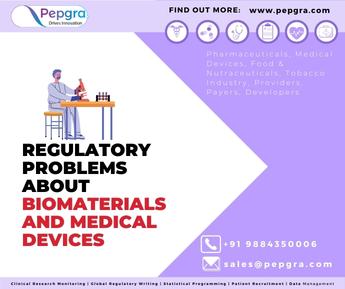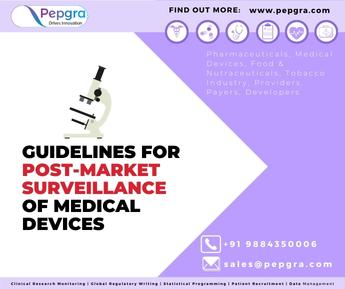In Brief
- The necessity of the risk management plan (RMP) has been studied before the launch of the medical device and medicinal product.
- Risk management documents/plan for medical device is done and verified through FDA QS regulations and ISO 14971.
- For medicinal products the risk management documents/plan is achieved by
- If more than one medicinal product is studied, article 14(2) of Regulation (EC) No 1394/2007 provides a layout for RMP for such advanced therapy medicinal products (ATMP)
Introduction
Risk is considered as an incident that might occur at any point of time, which might eject either it’s positive or negative affect on project. Risk can occur due to many factors taken into consideration and one has to understand that not a single factor is responsible for any damage. For example, a case may need permission from environmental department to carry out the work, but if the man power assigned might not be sufficient to continue the work as the risk involved is the available personnel may not complete the work in stipulated time or might take longer time to issue a permission or those documentations may not be adequate for the activity. Such risks show tremendous impact on the economy of the projects which are pre planned and scheduled to perform. However, most of the projects possess some risks and through risk management documents/plan (RMP), some technical techniques help in monitoring those activities. Hence, risk management is necessary to implement on all those documents whose probability of having risk is found to be high.It includes processes for risk management planning, identification, analysis, monitoring and control. Many of these processes are updated throughout the project lifecycle as new risks can be identified at any time. It’s the objective of risk management to decrease the probability and impact of events adverse to the project.
The need for risk management documents/plans (RMP)
Usually most of the medical devices that are designed and medicinal products which are prepared to reach the doctors first and later to patients, considering that their usage is believed to be safe on patients, but sometimes unknowingly both doctor and patient experience the risk either due to device or medicine. Hence, it is essential to understand why the risk management is needed for both medical device and medicinal product, one has to follow FDA QS regulations and ISO 14971 for medical deviceto check the quality of the device and to know its post-product development which would explain the risk management process of medical device. On the other hand, as perVth module of GVP, it is necessary to document all the risk management system which must be identified and considered to lower the risks of medicinal products. In addition to this, it is checked whether pharmacovigilance activities are sufficient enough or any other new necessary activities have to be included. Risk minimising activities are mentioned or not or may have to introduce new rules to minimize the risks. Hence, the intention is to identify the risk involved in usage of medical device and medicinal products to analyse and evaluate its safety in medicine field.
RMP: What it involves
At present ISO 14971-2019 was accepted by American National Standard and was progressed further by AAMI application of Risk Management to Medical Devices Working Group. This involves discussion on the quality management and common aspects of the usage of medical devices including in vitro diagnostic devicesand any harm to the humankind and its severity in presence of ethical committee members. They revise and review the efficiency of the medical device every five years to upgrade the advancement of the any technology that might have occurred. Although, risks are discussed, parallely the benefits are also assessed and attention is given on the medical device which would be considered safe. It also estimates the risks related to data and security systems. Moreover, the necessity for production and post-production activitiesmust be cleared and revised and if necessary it should be restructured depending on the reviews on the safety of the medical device.
On the other hand, RMP of medicinal products involves identification and characterization of thesafe usage of the medicinal product and it also rectifies and quantifies the potential adverse risks prior to the pharmacovigilance plans. It should involve all the safety measures appropriately or else it must revise for extra safety of the medicinal product. Further, Article 14(2) of Regulation (EC) No 1394/2007 provides a layout for RMP for advanced therapy medicinal products (ATMP). It includes information if the RMP considers more than one medicinal product, in that situation separate information on each medicinal product must be mentioned along with the total population size for each medicinal product. Hence, analysing the risk management plan for both medical device and medicinal product is important before its launch2.
RMP: What it offers
Under the jurisdiction, risk management documents/plan is necessary to prior analyse the risks before the medical device is marketed. It offers protective measures towards products (medical device and medicinal product)against its damage. It ensures safety of the product when used to treat patient, and clearly provides an idea on its adverse reactions. It also rectifies if any device is unsafe and reaches the market, it is immediately corrected with efficiency.
RMP outputs
The output of risk management plan can either be qualitative which grade the range of the risk as high, medium or low and sometimes risk score can define its risk rank. In quantitative output, it measures or estimates the probability of the risk consequence.Thus, quantitative risk estimation can resolve or focus on a specific consequence at one particular time.Risk management plan when implemented on medical devices and medicinal products, it can avoid the minute errors in manufacturing process before it reaches to the stakeholders. It even benefits various organizations to check back or revise the yearly plans to be implemented. Most of the risks are eliminated through RMP by applying techniques that monitor the events that have crucial impact and affect the outcome of the project1.
References
- Risk Management Plan. https://www.fda.gov/media/71543/download
- ISO 14971:2019 [UNKNOWN]. Medical devices — Application of risk management to medical devices. ICS:040.01. Medical equipment in general
- Guidance on the format of the risk management plan (RMP) in the EU – in integrated format. EMA/164014/2018 Rev.2.0.1 accompanying GVP Module V Rev.2 Human Medicines Evaluation. 31 October 2018.
- Medical devices—Application of risk management to medical devices. Association for the Advancement of Medical Instrumentation. Approved 10 May 2019 by American National Standards Institute.
- Medical devices—Application of risk management to medical devices. ISO 14971:2019(en)





